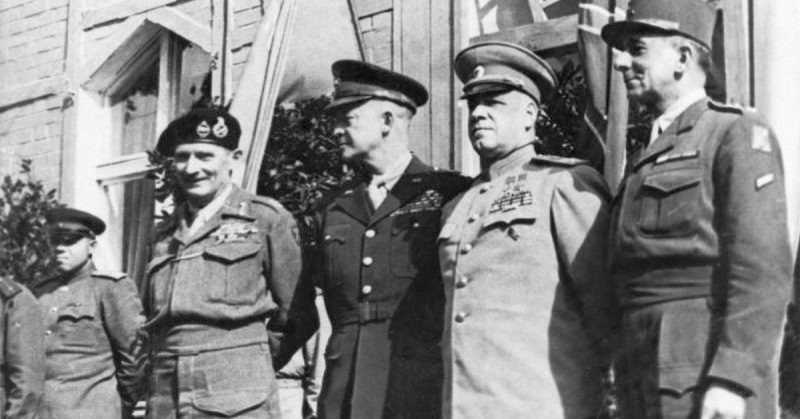In the final months of WWII, Allied forces invaded Germany from east and west. The vast military enterprise relied upon the leadership of good generals. Here are some of those commanders.
Bradley
Omar Bradley’s vital role in the war is often understated compared with his peers such as Eisenhower, Montgomery, and Patton. One reason was Bradley’s personality. The American general was relatively unassuming and had little time for theatrics. He kept out of politics while honing the skills of American fighting forces alongside the British in North Africa. He recognized how important the fight was as preparation for Europe, saying that “In Africa, we learned to crawl, to walk, to run.”
In the very last months of the war, Bradley led the advance into which the western Allies poured their greatest resources. It was his job to push across Germany, meet up with the Russians, and prevent any Nazi effort to regroup in the rumored Alpine redoubt.
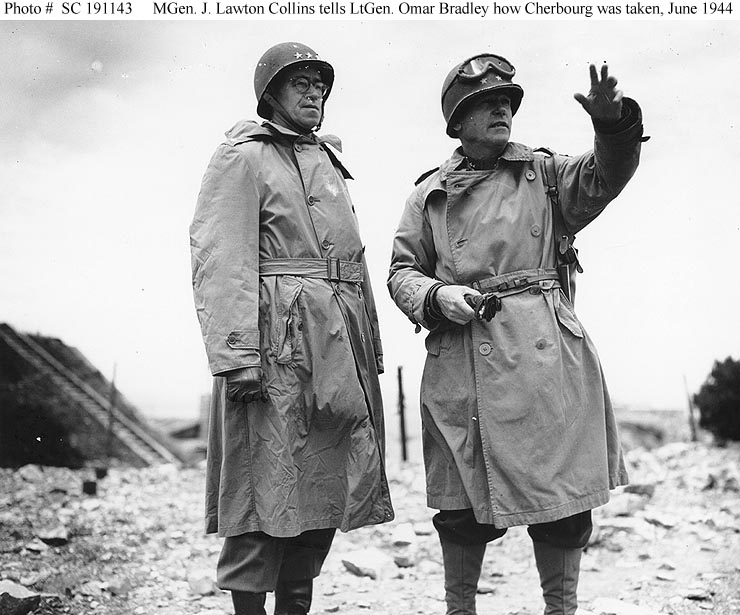
Browning
The deputy commander of the First Allied Airborne Army, Frederich Browning came out with one of the most memorable phrases of the war. When told about Montgomery’s plan to seize the five bridges to Arnhem and so punch into the German Ruhr Valley, he said: “Sir, I think we might be going a bridge too far.”
Eisenhower
Historians have much debated the choice of Dwight “Ike” David Eisenhower as supreme commander of Allied forces in Europe. He lacked combat experience but had succeeded in leading America’s biggest ever war games. From there, he went on to lead the American landings in Africa and Italy, before masterminding the invasions of France and Germany.
Eisenhower’s job was as much political as it was military. He had to balance the egos and vested interests of American, British, and French commanders and politicians. Whatever his flaws, his campaigns were a great success, as shown by D-Day. His decision to send Bradley deep across Germany rather than continue toward Berlin may have cost the western Allies ground which the Soviets took. However, given the effectiveness of German forces throughout the war, it was at the very least an understandable decision.
Gerow
The commander of the US V Corps, Gerow commanded his men in the first major assault on the Siegfried Line. The string of defenses, hastily rearmed as the Allies approached, repulsed most of the American attack, causing heavy casualties. Gerow’s third division punched through a gap where two German armies met, finding a way through the line and into Germany.
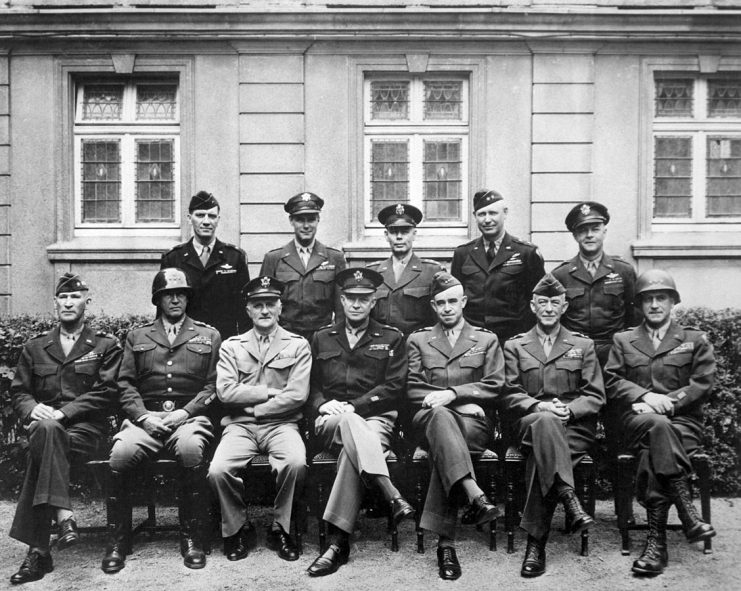
Hodges
In the closing stages of the invasion of Germany, General Courtney Hicks Hodges raced his First Army across the relatively undefended Plain of Saxony. They advanced so fast the Soviets became alarmed. To keep the peace, Eisenhower ordered Hodges to halt at the River Mulda.
Koniev
As commander of the 1st Ukrainian Front, Field Marshal Ivan Koniev was one of two Russian leaders who attacked deep into Germany and threatened Berlin. As they raced to beat the Allies to the German capital, he and Zhukov were also racing each other.
Although both generals were permitted by Stalin to enter the city, Koniev was thwarted in his ambition to be Russia’s most celebrated general. He was ordered to halt so Zhukov’s men would have the honor of raising the red flag over the Reichstag.
Given Zhukov’s fate, it may have been the best thing that ever happened to Koniev.
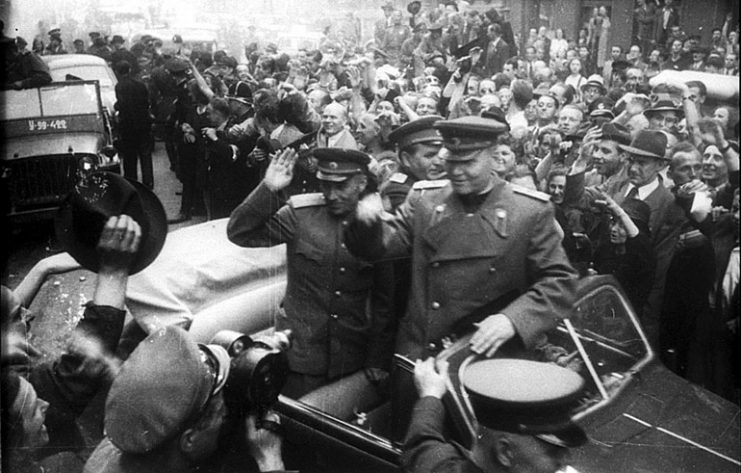
Middleton
Fat and bespectacled, the American Troy Middleton did not look the part of his dynamic name. Yet his was among the most distinguished service for an officer of his rank in the war – logging 480 days of combat service. His VIII Corps had the unenviable task of holding the “ghost line,” the thinly defended part of the Allied line that was attacked by Hitler in the Battle of the Bulge. After dealing with that assault, they headed into Germany and made swift advances across the country. After his men had discovered the concentration camp at Ohrdruf, it was Middleton who called Patton to go and witness the terrible sight.
Montgomery
Field Marshal Bernard Montgomery was the most famous British commander of the war. A self-confident showman, his style was still understated compared with the likes of Patton. After taking over in North Africa, he led the British to success there and in Italy. As commander of ground troops for the D-Day landings, he did much to improve the planning for that operation.
Montgomery’s rivalry with Patton pushed both men to heights of achievement. However, it was in his advance on Germany that Montgomery made his greatest mistake, with an over-ambitious attempt to seize Arnhem.
Patton
Flashy and aggressive, the American General George Patton was a bold but insensitive commander. After successes in Africa, he was removed from command in Italy for slapping a shell-shocked soldier. Too good to be kept on the bench, he was given command of an army during the fighting in France, smashed German industry in the Ruhr, and played a vital part in winning the Battle of the Bulge.
Confrontational to the end, Patton made a pointless crossing of the Rhine just to beat Montgomery to it. He then offended Russian officers during a party to celebrate their victory.
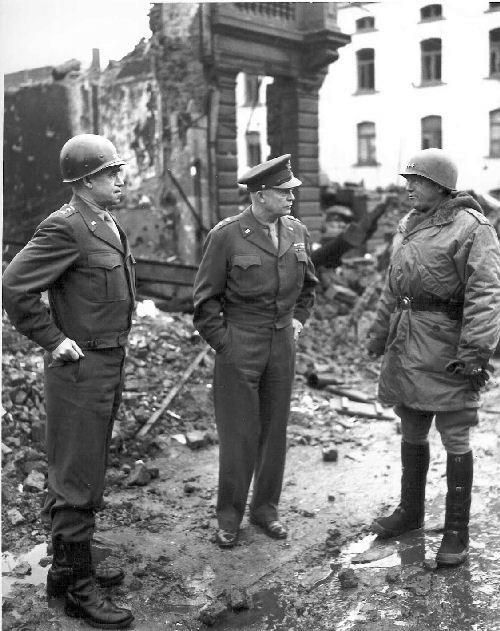
Zhukov
Koniev’s great rival, Marshal Georgii Zhukov was a favorite of Stalin. As such, Koniev’s army was given the honor of raising the red flag over the Reichstag in Berlin. The defeat of Germany was Zhukov’s greatest triumph. A year later, Stalin grew nervous about his General’s prestige and power. Zhukov had become too popular, so Stalin sent him into obscurity.
Sources:
Nigel Cawthorne (2004), Turning the Tide: Decisive Battles of the Second World War
Richard Holmes, ed. (2001), The Oxford Companion to Military History
James Lucas (1986), Last Days of the Reich
David Rooney (1999), Military Mavericks: Extraordinary Men of Battle
Charles Whiting (1999), West Wall: The Battle for Hitler’s Siegfried Line
